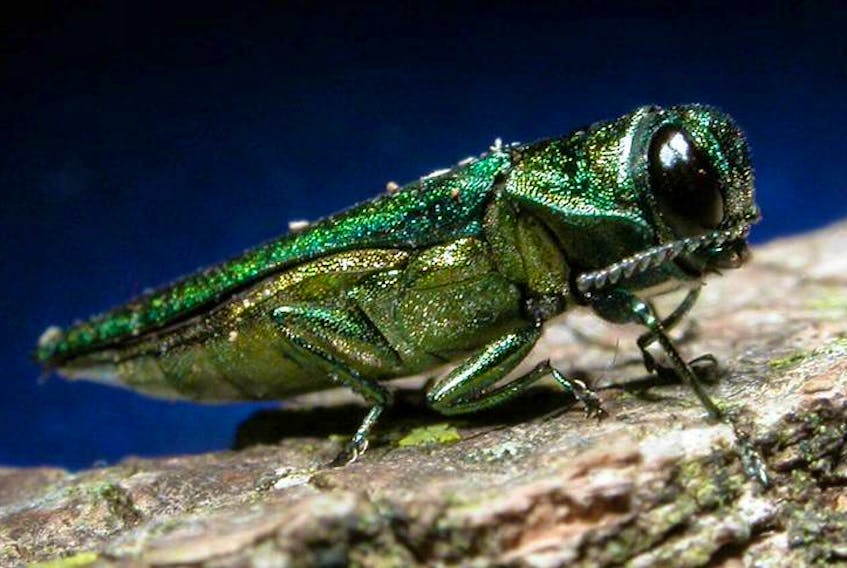An aggressive invasive beetle that attacks and destroys Ash trees has been spotted in Edmunston, New Brunswick as it slowly nears the forests of Nova Scotia.
If it enters the province, the Emerald Ash Borer could devastate Ash trees in the parks of New Glasgow as well as urban forests in other towns.
“They’ve killed hundreds of millions of Ash trees in North America already and all Ash trees on the continent are at risk,” said Ron Neville, a health survey biologist with the Canadian Food Inspection Agency.
He said that Emerald Ash Borers likely entered Canada in 2002, hitching a ride on infested wooden pallets or other Ash tree products from Asia. The beetle was first spotted in southern Ontario that year in Windsor, as well as across the American border in Detroit.
Since then, the beetle has spread across the country and is now menacing the Maritimes.
The beetle attacks Ash trees when its larvae tunnel through the tree’s vascular system that delivers water, nutrients and sugar.
While woodpeckers can feed on emerging beetles, they have no known natural enemy that can effectively control their population. Once infested, Ash trees have a nearly 100 per cent chance of dying and most do so in two to four years.
On their own, beetles only travel a few kilometres per year, but human trucks and ships carrying infested wood products can easily disperse them over wide areas.
As such, the CFIA focuses on preventing the moving of any contaminated wood from an infested to a non-infested area. Beetles can hitch lifts in logs, firewood, nursery stock and any other wood products made from ash trees.
“It’s a highly destructive pest,” warned Neville.
Any Ash tree that has a large amount of woodpecker activity, is thinning at the crown, has dead branches and yellowing of its leaves is likely infested. Another possible sign is fresh shoots, as a tree under stress may also try growing new branches.
“People who have Ash trees on their property are encouraged to look for signs of attack,” said Neville.
Adult beetles emerge from trees through a D-shaped exit hole between mid-May and late June.
The adults have a metallic blue-green colour and have narrow bodies measuring 8.5 to 14 mm long. Their larvae have a creamy white colour with a light brown head.
Anyone who sees a suspected Emerald Ash Borer beetle or possible infestation should call the CFIA at 1-800-442-2342.









